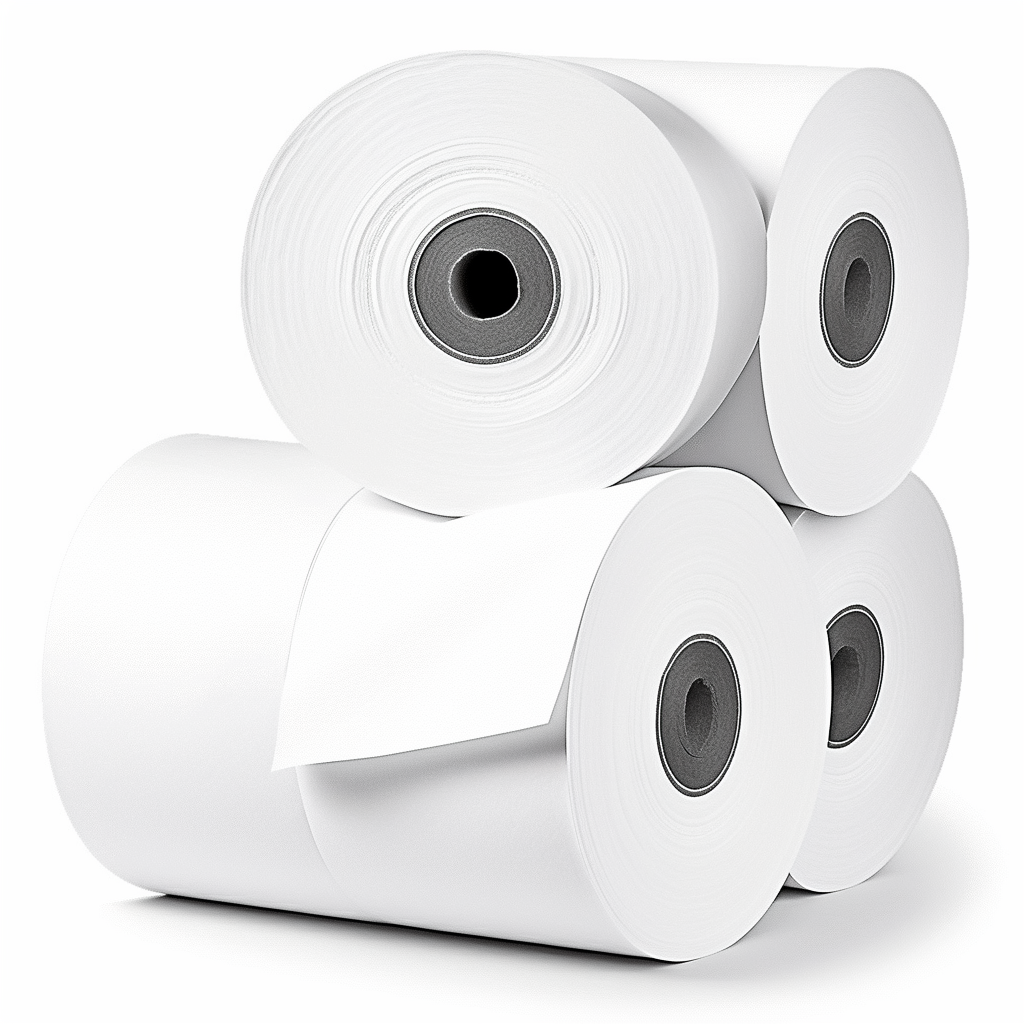
Thermal paper is a special paper widely used in the printing field of receipts, invoices and labels. It has unique characteristics to produce images or text after heating, without the use of ink or ribbons. So, what material is the thermal paper made of? This article will reveal the secrets of it.
The main ingredients of heat sensitive paper are two key materials:
heat sensitive coating and substrate. The thermal coating is the core part of the thermal paper, which is responsible for receiving the heat energy and converting it into visible images. This coating is usually composed of two main components: a thermal substance and a chromogen.
Thermic substance is one of the key components in thermosensitive coating. It is a chemical substance with the ability to undergo a chemical reaction after heating. The most common sensitive substances are bisphenol A (BPA) and bisphenol S (BPS). When these thermal substances are stimulated by heat energy, they will undergo chemical changes, releasing energy and triggering a chromogenic reaction.
Color gen is another important component responsible for producing images or text after the thermal substance is heated. The most common chromogen are lactic acid compounds, such as lactate or lactamide. After these compounds release the thermal energy, they react with them to form a visible image. The type and formulation of the color developer can vary according to the desired printing effect.
In addition to the thermal coating, the thermal paper also needs a stable substrate to provide support and construction. The commonly used substrate is paper or plastic film. Paper substrate provides good printing quality and readability, while the plastic film substrate is waterproof and wear-resistant.
To sum up, the thermal sensitive paper is composed of the thermal sensitive coating and the substrate. Thermosensitive coating includes sensitive substances and chromoagents. The sensitive substances produce chemical reactions that release energy and trigger the reaction of chromoagents to form an image. The substrate provides support and structure for paper or plastic film to ensure the quality and durability of printing.
The process of making the thermal paper usually involves evenly coating the thermal coating on the substrate and undergoing steps such as drying and cutting to form the final paper or film product. When printing, the thermal print head will apply the appropriate heat energy, and the chemical reaction with the thermal coating contact area will occur to generate images or text.
Thermal sensitive paper is very widely used. It is widely used in receipt and invoice printing in retail, hospitality, banking and other fields. It is also commonly used for label printing in the logistics and transportation industries for easy tracking and management of goods. Because the thermal paper does not need ink or ribbon, the printing process is more convenient, clear, and can save cost and maintenance. However, it is important to note that the heat-sensitive paper needs special attention during storage and processing. Due to the chemical nature of the thermosensitive coating, the thermosensitive paper is very sensitive to high temperature, direct sunlight and humid environment. Prolonged exposure to these conditions may lead to the fading or ambiguity of the image.
Therefore, proper storage and treatment are crucial to maintain the quality and readability of thermal paper printing. To sum up, ” What material is the thermal paper made of?” The production of thermal paper mainly involves thermal sensitive coating and substrate. The heat-sensitive coating is composed of thermal substances and chromogen. After heating, the thermal substances undergo chemical reaction, generating energy and triggering the reaction of chromogen, forming an image. The substrate provides the support and structure for the paper or plastic film. Thermal paper is widely used in all walks of life, but we need to pay attention to the correct storage and processing methods to ensure the quality and readability of printing.
